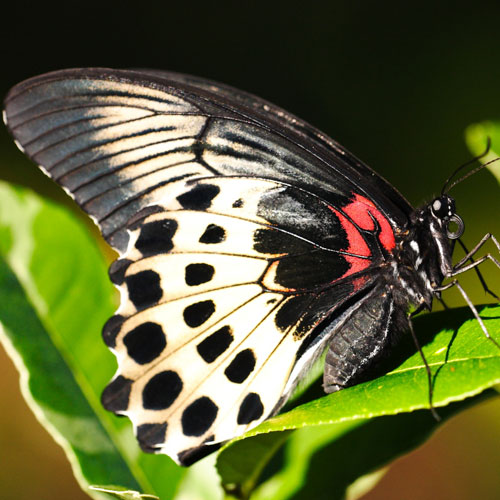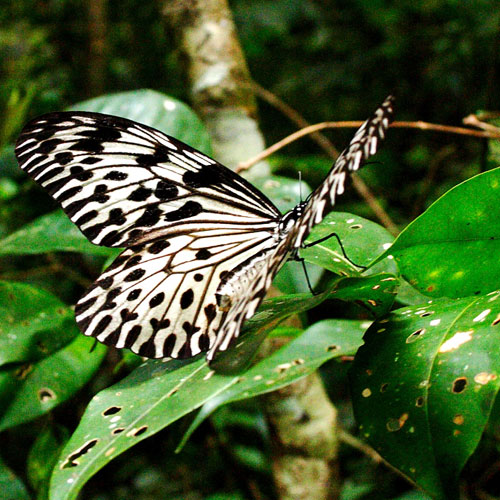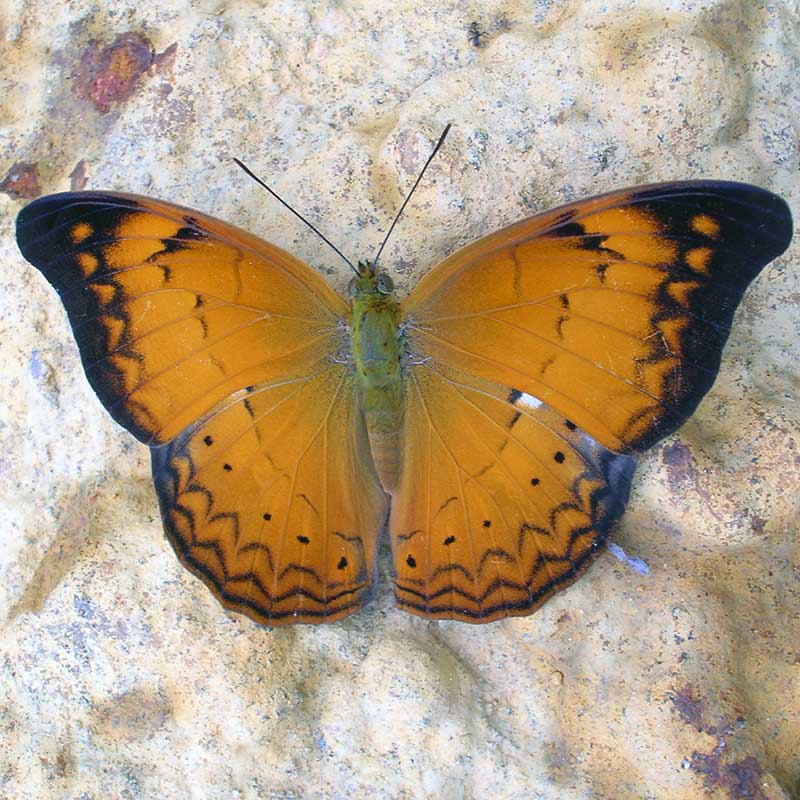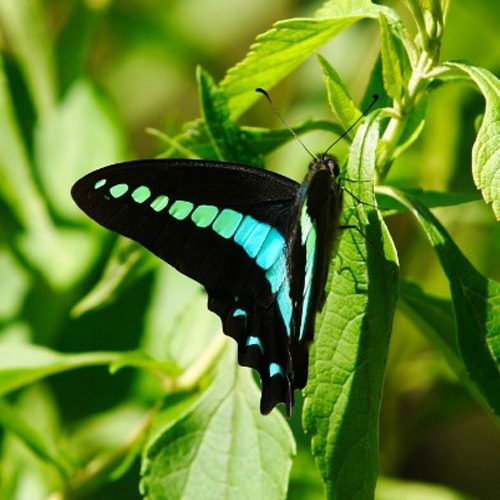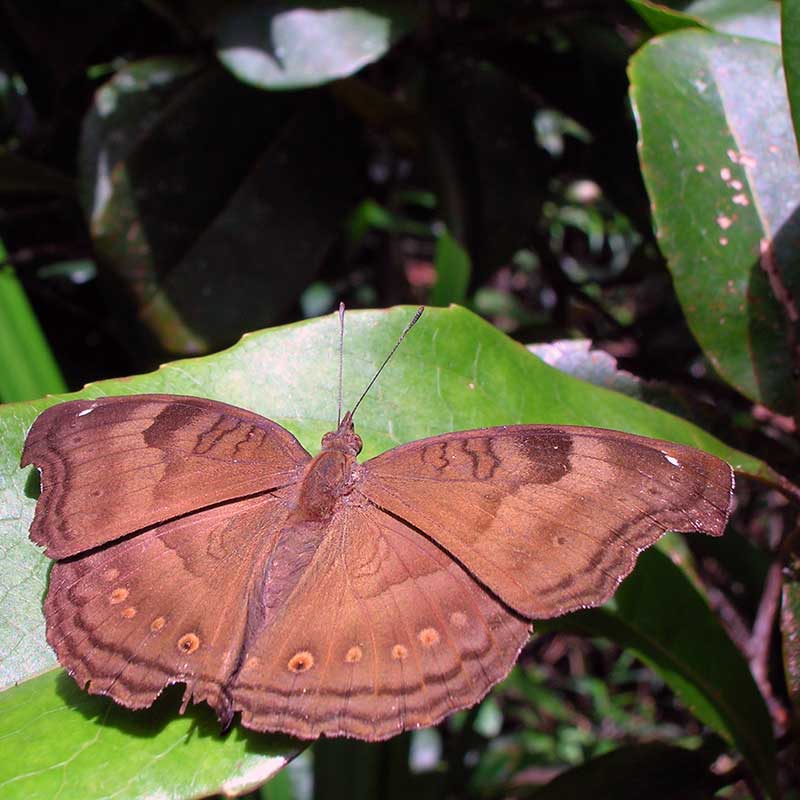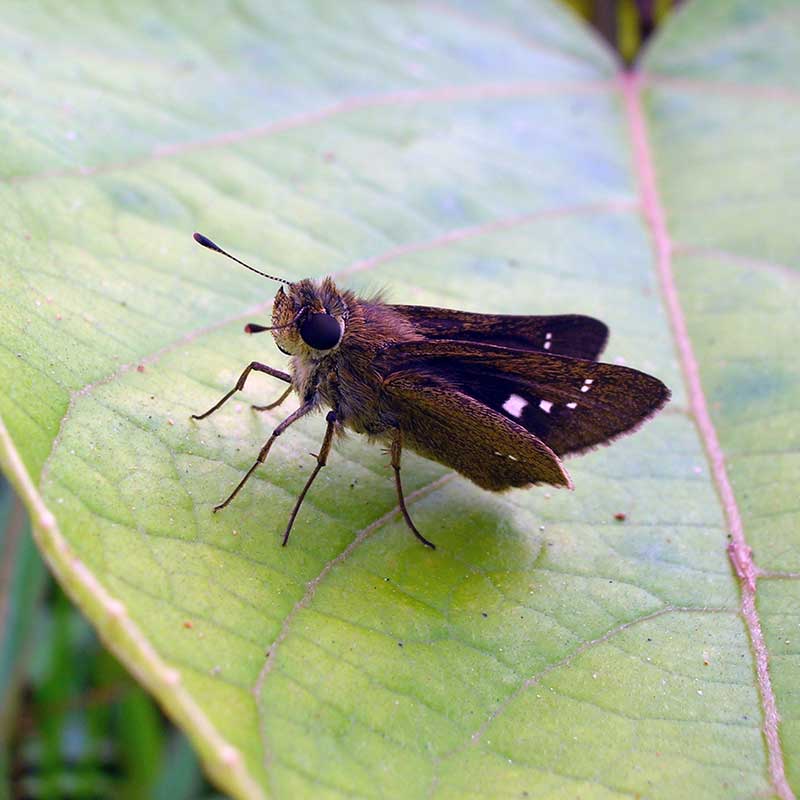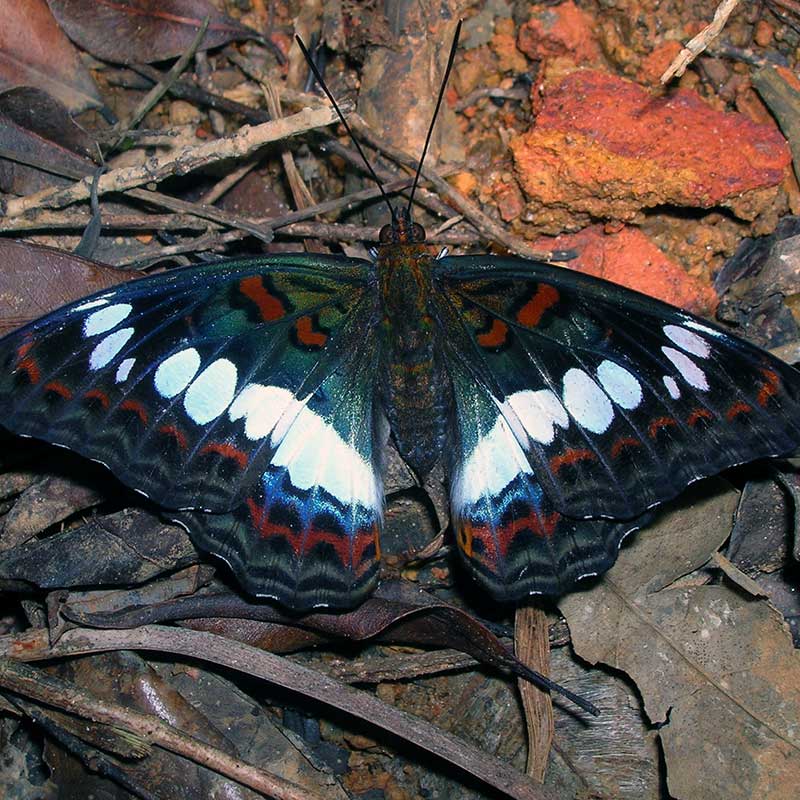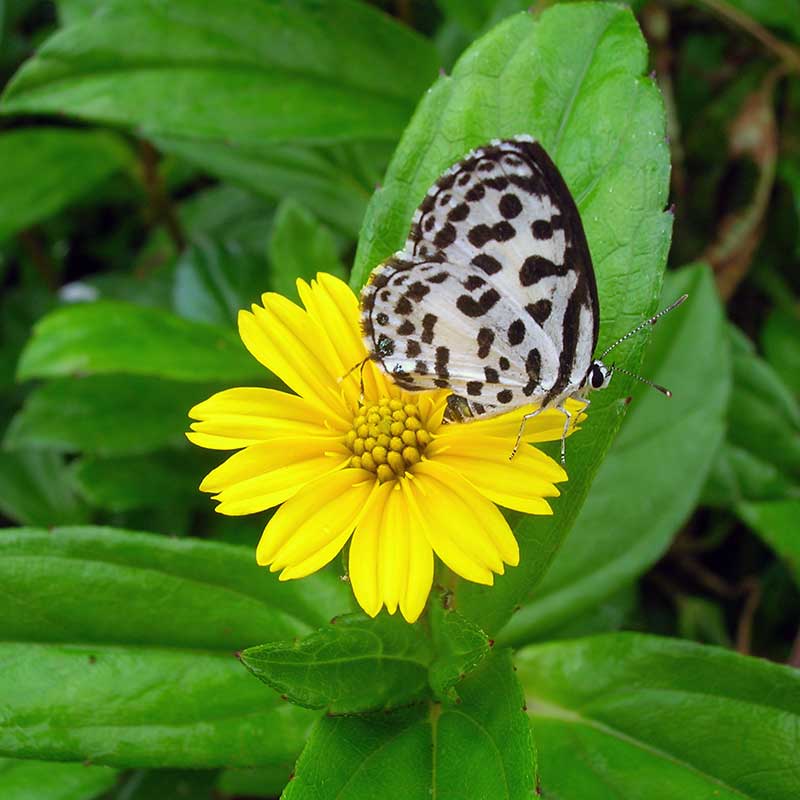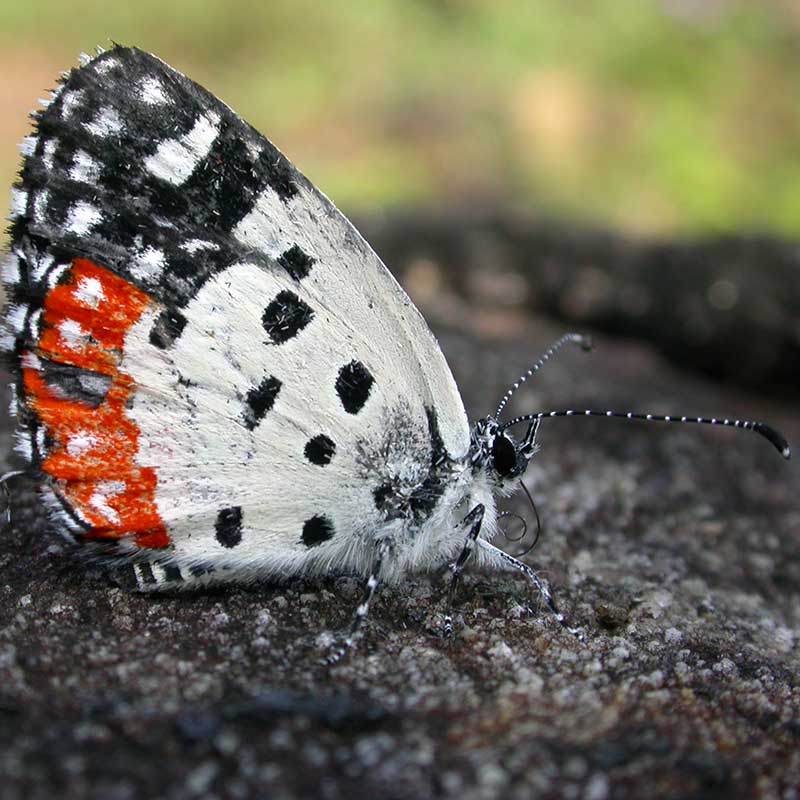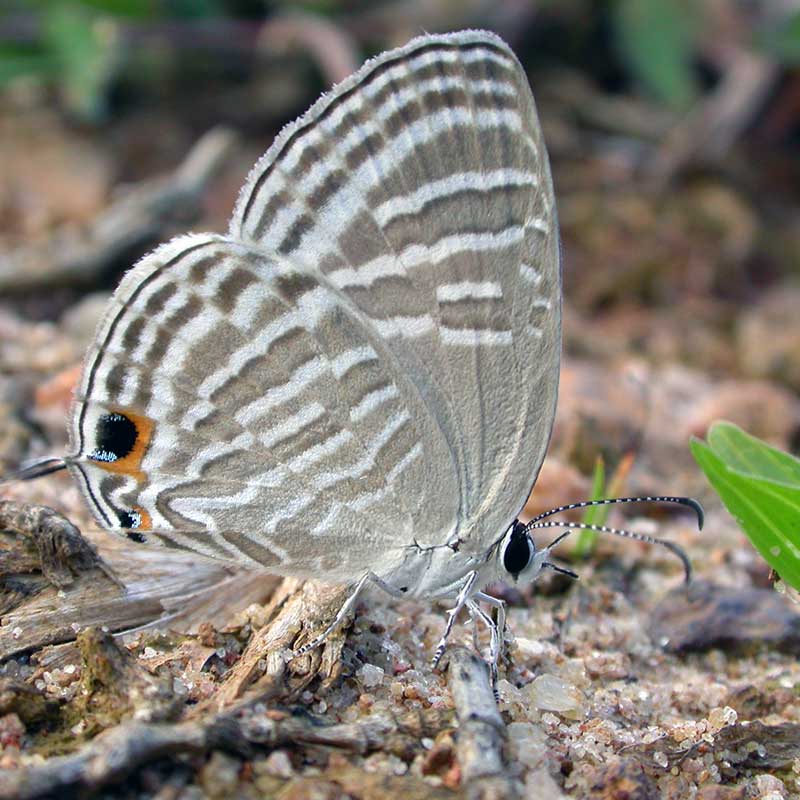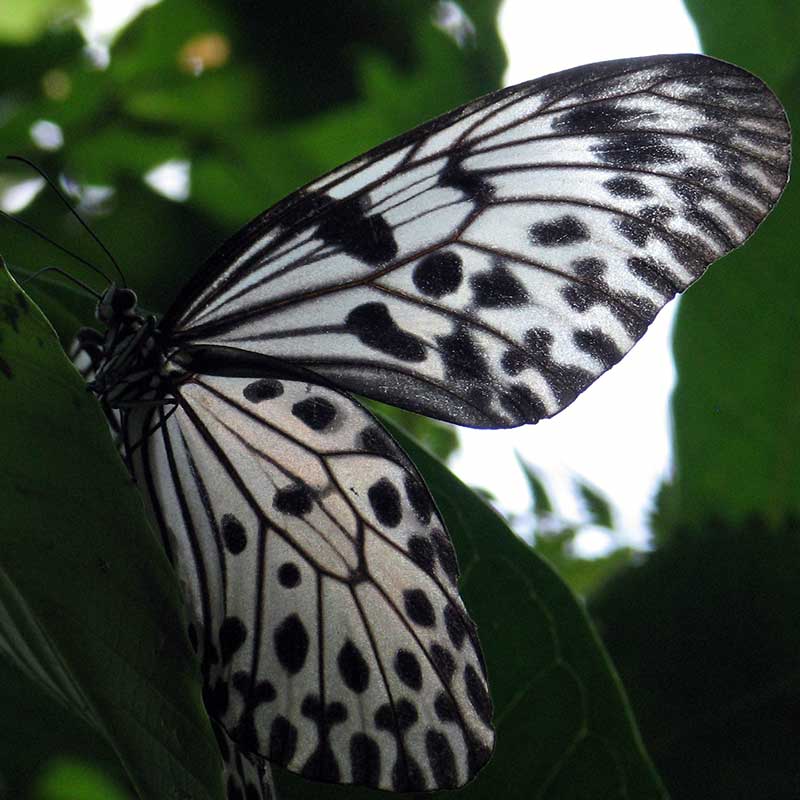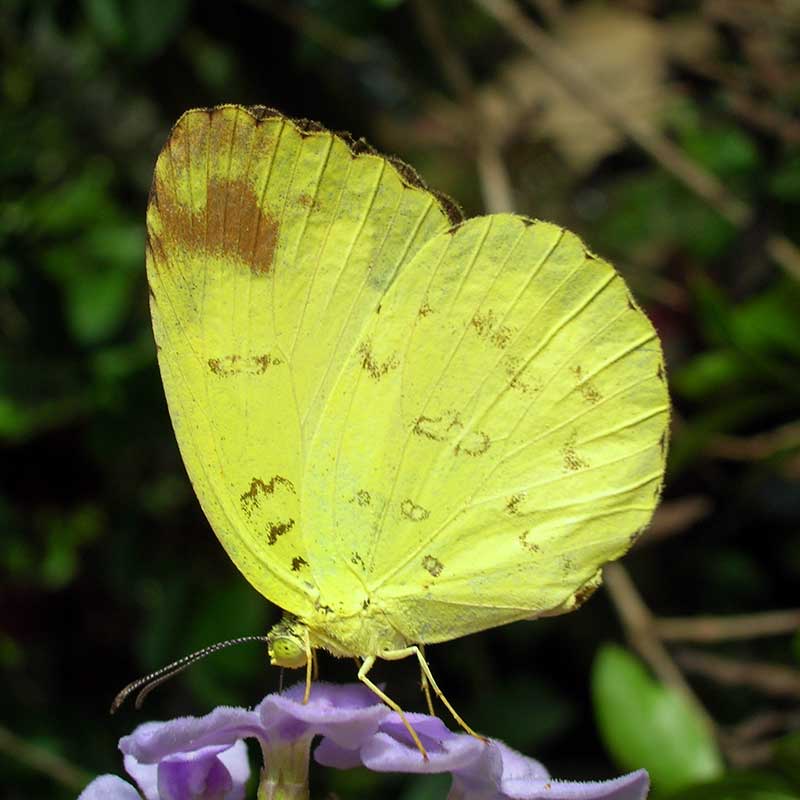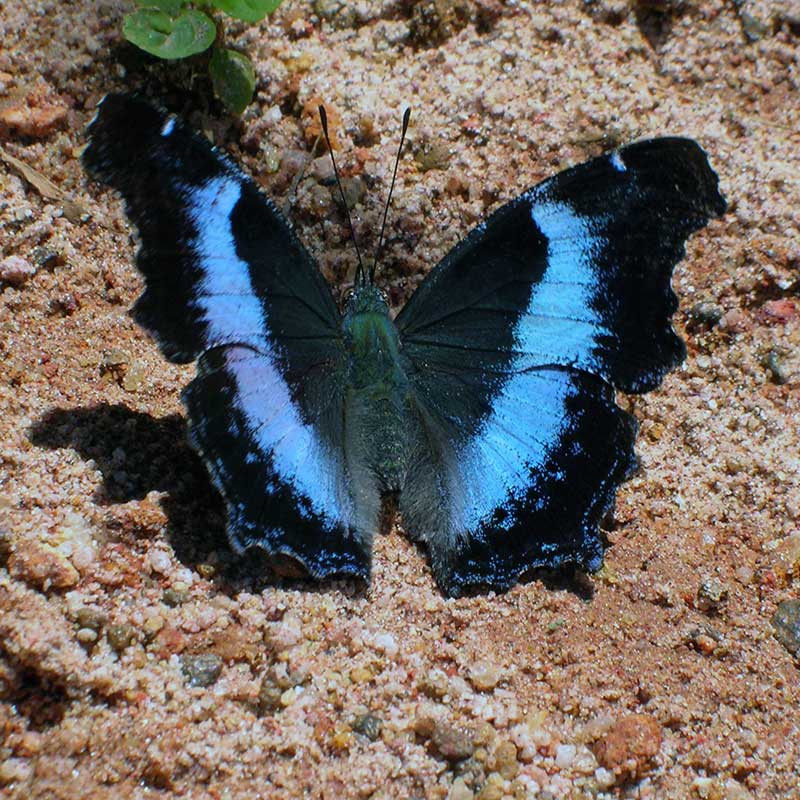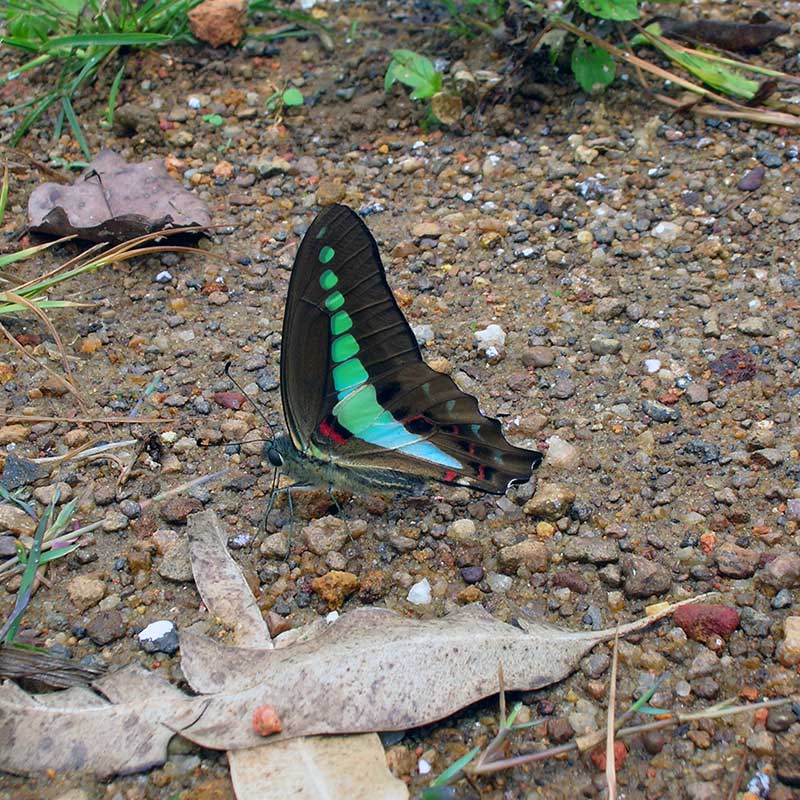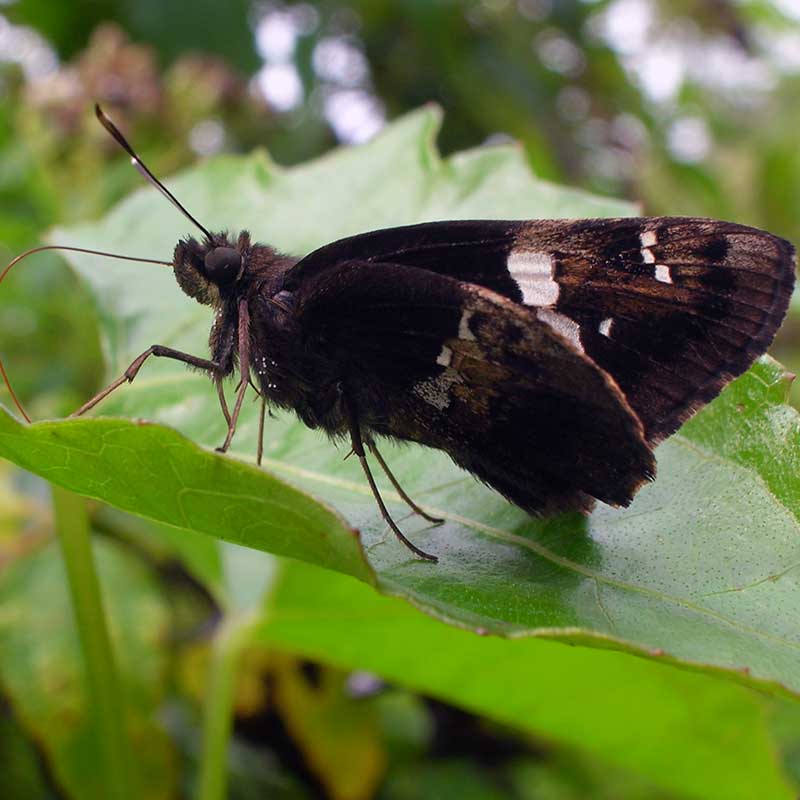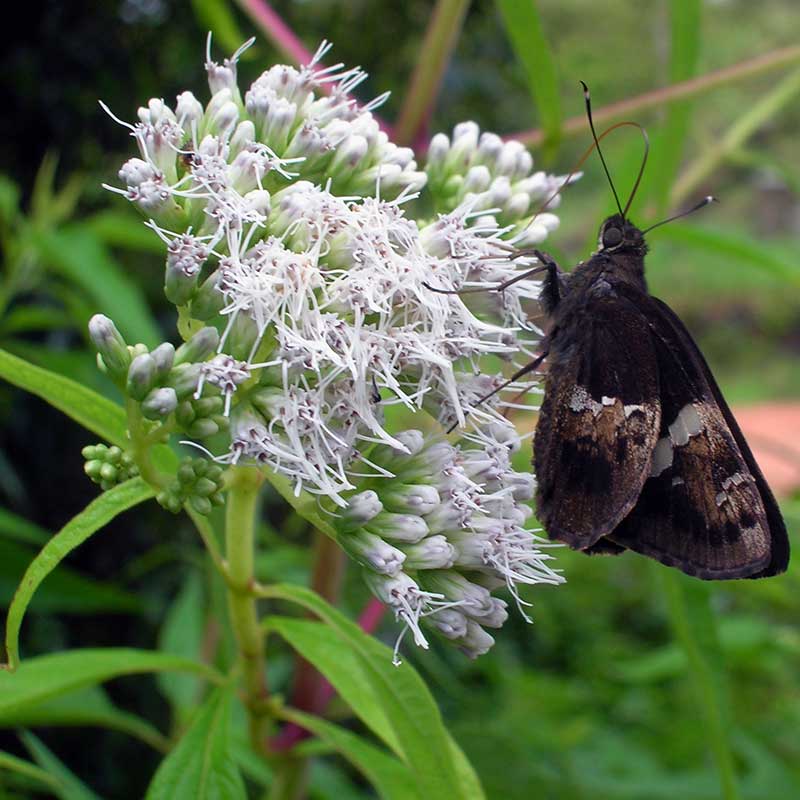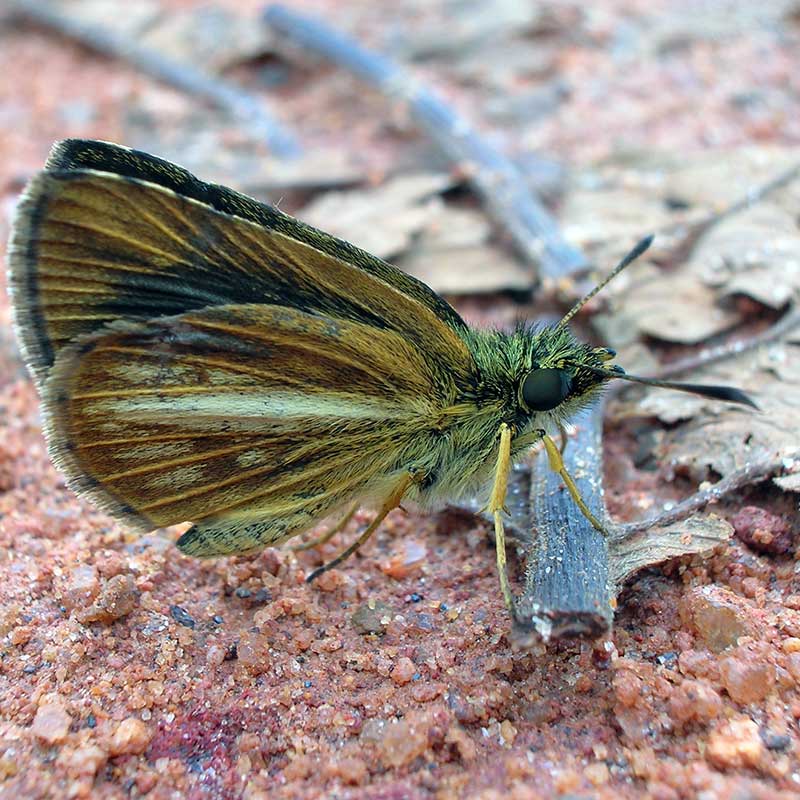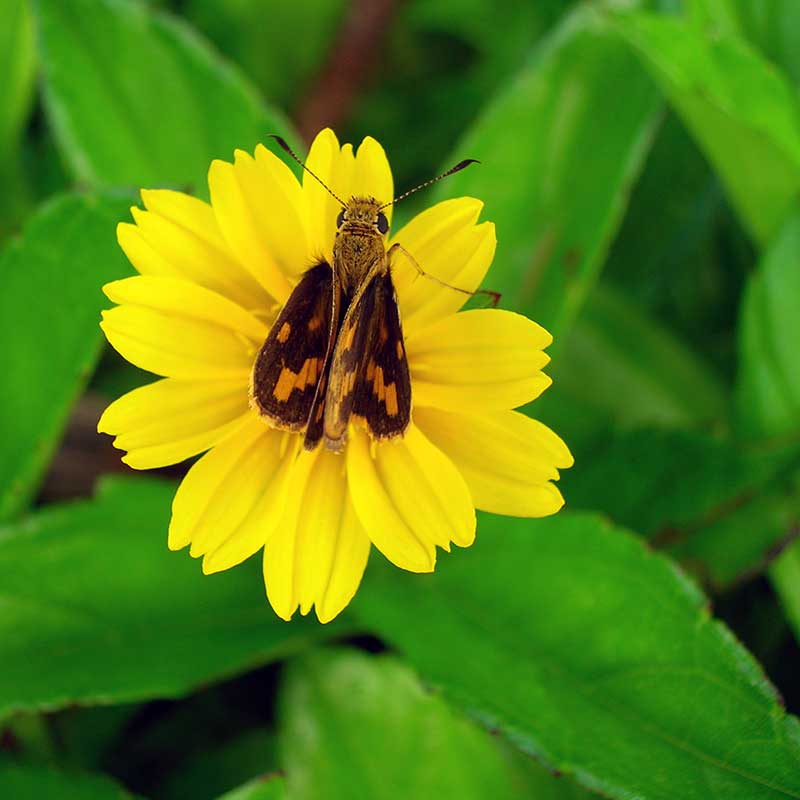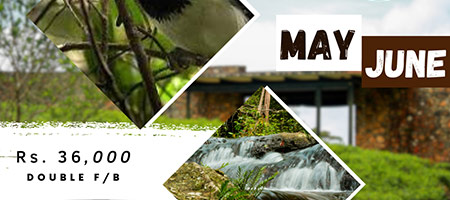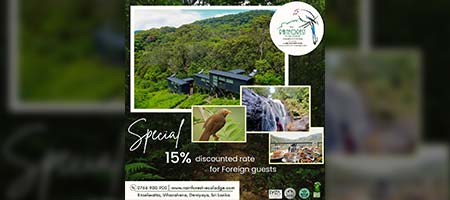Butterflies
As the Rainforest Ecolodge is situated in the high hills and is subject to low temperatures, mists and fog affect the activities of any animal that is ectothermic, like insects. They are active only when the temperatures rise and the mists thin. Insects that are active from early in the morning, from about 7 a.m. in the lowlands of Sri Lanka that have higher temperatures, will be seen at this area only when the sun comes out and warms the vegetation and the ground. This is especially true for butterflies and hemipterans as they usually start to fly only around mid-morning a typical day in highlands. Even when they have come out, if weather changes rapidly to colder, windy and misty condition, as it often is in the vicinity of the Rainforest Ecolodge, the insects disappear quickly from sight.
Common Birdwing / Ceylon Birdwing (Troides darsius)
This is the largest butterfly species in Sri Lanka and is endemic. It can be easily identified by its size and the yellow and black colours seen when flying. Adults are fairly common, flying high close to the tree tops at the edges of streams, rivers bordering forested areas and even in gardens or at the edges of the forest patches adjoining rural homes. They are strong fliers and active early in the morning up to midday and sometimes up to early afternoon. They exhibit a certain extent of territorial behaviour, in that they can be seen flying back and forth within the same stretch of stream edge/ garden or forested area. Their larval host plants are from the Family Aristolochia. In Sri Lanka most often recorded is Aristolochia indica, a small climbing plant that either occurs in the wild or is grown in rural gardens as it has medicinal properties.
Common Mormon (Papilio polymnestor)
Another very common species, laying their eggs on young leaves of lime, lemon, orange and Murraya koenigii (curry leaf plant). In flight, they can be identified by the flashes of black with yellowish white characteristic marks on their tailed wings. Apart from the markings on the outer border of the wings, the hind wings bear a band of yellowish white patches running across them.
Lime Butterfly (Papilio demoleus)
One of the most common species seen in gardens and places where there are species of citrus, such as lime, lemon or oranges. They are attractively coloured with the upper surface of the wings showing black with the yellow markings. When at rest, a bright red spot can be seen on the inner margin of the hind wings. The yellow markings become more orange in colour as the adults age. A strong flier, they tend to inspect leaves of larval food plants several times before laying pale yellow eggs.
Tailed Jay (Graphium Agamemnon)
This is an attractive common butterfly with the upper surface of its narrow wings, deep blackish brown with green markings. It bears a rather robust tail. The lower surface of the wings bears a mosaic or mottled pattern of brown, green and black markings that can be observed even in flight. It shows strong and rapid flight and can attain heights up to the upper levels of tall trees such as avocado. It also can be observed inspecting and feeding on much shorter flowering bushes.
Tree Nymph (Idea Iasonia)
This is an endemic species. A very large butterfly with a beautiful pattern of black markings on white background of its wings. The white background is sort of semi- transparent. The forewings are longer than the hind wings. The adults can be recognized easily by their size, colour pattern and by their slow and at times almost gliding flight with spread out wings along the high tree tops. It is a one of the slowest flying butterflies in the country. Seen at a distance they can appear to be almost hovering in one place with spread out wings. They are most commonly observed along the edges of streams, pathways and openings in the forest.
Bluebottle (Graphium sarpedon teredon)
A fast flying, very attractive insect. It can be seen flying around tall trees bearing flowers as well as bushes feeding rapidly. It can be identified inflight by its pointed wing shape and the central, brilliant blue-greenish band on a black background on the upper surface of its wings. The hind wings also bear a row of blue green spots close to its outer edge. At rest, with wings folded, this central band shows a characteristic stretched out V shape. The males of the species are well known for their ‘mud puddling’ behaviour or settling down on wet patches on the ground.
Common Sailor (Neptis Hylas)
A common small sized butterfly of the hill region. It can often be seen on vegetation at the edges of pathways and trails. The black background of the upper side of both wings is broken up by white markings. There is a triangle shaped white spot on the upper side of the forewing, close to one end of a short conspicuous white line. It has a thick band of white in the hind wing which seems to connect with the line of white spot shaped markings on the forewing. There is also row of square like white patches below the margin of the hind wing with its wavy margin. The underside can be bright brown/orangey brown or darker brown with white markings similar to the upper side of the wing. This active insect can be seen even in the late afternoons in the higher elevations and often glides along the tops of short vegetation.
Common Jezeble (Delias eucharis)
One of the most common butterflies present in gardens and patches of plants even in most urbanized areas. It is conspicuous due to its bright orange, white and yellow colouring. Flight is fairly strong. In the lowlands of Sri Lanka it is often seen flitting about from early hours of the morning up to early afternoon, hovering over bushes, especially if they bear flowers and the mid to upper levels of trees, on plants growing on roadsides. They also settle on bare ground at the road edges, as well as at the edges of puddles and waterholes.




